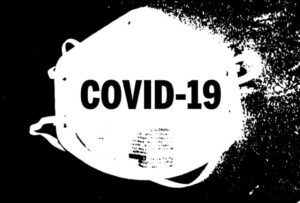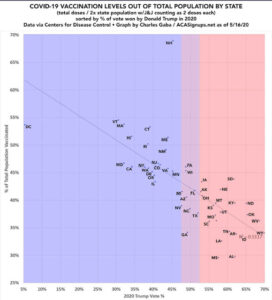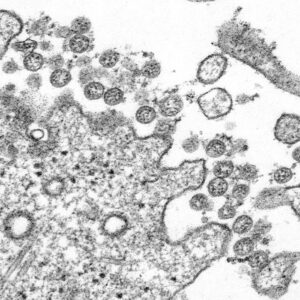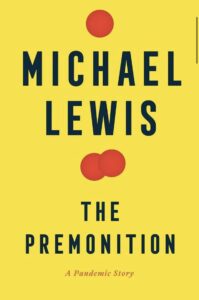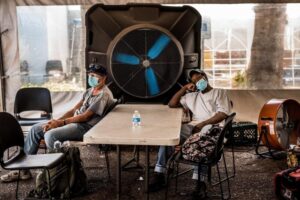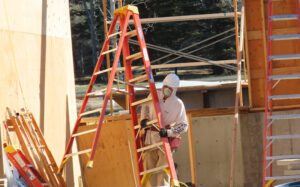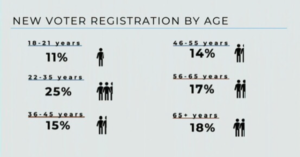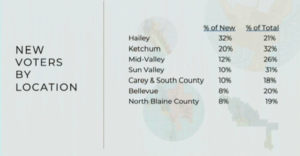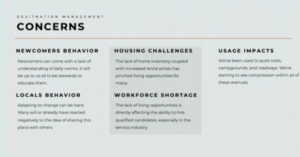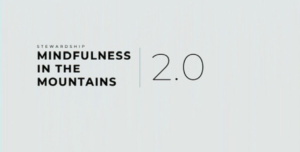ˈtrəst
May 18, 2021Washington Post
| The new mask rules from the C.D.C. amount to an honor system of sorts, where only unvaccinated people are expected to keep wearing masks in most places. But many Americans are wondering whether they can trust others to do the right thing. |
| In social psychology, there’s a well-established principle that a common enemy is supposed to bring people together. But shortly after the pandemic arrived, the U.S. saw a partisan divide over masks, screaming crowds outside state capitols and death threats against health officials. |
| It quickly became apparent that, even in a crisis, Americans were finding it difficult to come together. So it’s no wonder that the federal government’s new mask guidance has been greeted with reluctance — especially when fewer than half of Americans over 12 are fully vaccinated. |
| Celeste, a newsletter reader from Dayton, Ohio, wrote in with her own experience. |
| “The first day of The Great Unmasking at work went exactly as you’d expect: people who have previously bragged about not being vaccinated walking around without masks on,” she wrote. “Assuming people would act unselfishly to protect others goes against everything we’ve seen so far this pandemic.” |
| The C.D.C. is also asking Americans to trust one another at a time when faith in institutions and their neighbors is particularly fragile. According to a 2019 Pew Research Center report on Trust and Distrust in America, trust in the federal government was near record lows, and seven in 10 people said they thought that Americans’ trust in one another had declined over the past 20 years. |
“Betrayal is the wound that cuts the deepest.”
Boise State Public Radio
Most people in the Mountain West are still unvaccinated. Idaho has the second-lowest rate in the region with only 34% of its residents getting one or more doses.
COVID-19 vaccine supplies are now abundant – nationally about 60% of adults have had at least one shot.
“At least here in Casper, (Wyo.), you can go to the clinic and pick one of the three vaccines. It’s like a menu: I want Moderna, I want Pfizer, I want Johnson & Johnson. We have that much vaccine now,” said Mark Dowell, an infectious diseases physician and Natrona County health officer.
Even so, most people in the Mountain West are still unvaccinated. And Wyoming has the region’s lowest vaccination rate with about a third of residents with at least one shot. Idaho is a close second at about 34% of its residents with one or more doses.
To achieve herd immunity, epidemiologists have suggested we need about 70% of people to be immune, though that number is hard to pin down without more research.
Dowell said we also don’t know how many people actually were infected with COVID-19, how many of those built up antibodies, and how long those antibodies might last.
“We think that for every one infection, there may have been one or two more that had symptoms that went undetected,” he said.
Even if we could figure out how many were infected, he said we still have one big unanswered question: “Of the people that had the infection but didn’t know it, did they get good protection from their immune system to add to our herd immunity?”
We also don’t know how long the vaccines will stave off the virus, though many expect them to offer protection for at least a year.
Dowell says it could take several months to figure out how much of the virus we’ve stopped, saying, “The proof of the pudding will be next fall and winter when everybody’s inside again.”
At the same time, areas with low rates of immunity and high rates of spread could allow the virus to mutate into a more dangerous strain.
“That’s another reason to get vaccinated, to head off the mutations,” he said. “The worry is that you’ll find a variant eventually that will not really be covered by the vaccines.”
Dowell said he is continually talking to patients who believe in false conspiracy theories about the vaccine, ranging from it causing infertility to vaccines actually being tracking microchips from Bill Gates. At the same time, he still hopes he can convince more people to get it.
“When you’ve seen people die horrible deaths from COVID, it changes your perspective on things,” he said. “I had a close, healthy friend that died of COVID way before we had the vaccines. And it was a rough death. I sat at his bedside as he died, as we took him off the ventilator … it’s rough.”
Guest essay on why novelty means severity, and why so many questions about variants, children, Long Covid, endemicity and more revolve around that very notion by Dylan Morris, PhD.
. Nothing in this pandemic makes sense except in the light of novelty.
‘…wealthy countries have two choices for how the global pandemic ends: via natural infection or via vaccination. We should choose vaccination.’
‘Remembering that novelty means severity helps us see that the vaccines provide cause for hope, even if SARS-CoV-2 manages to stay with us for years. SARS-CoV-2 might stick around; the COVID-19 pandemic will struggle to do so.
But it also makes clear that those of us in wealthy countries have two choices for how the global pandemic ends: via natural infection or via vaccination. We should choose vaccination. And we must commit to that choice now. We don’t have much time.’
https://www.theinsight.org/p/novelty-means-severity-the-key-to
I continue to think where we’d be as a country right now with this pandemic if it had not been allowed, and encouraged, to become political. Hundreds of thousands did not need to die. -dayle
“One day some historian will look back and say how remarkable it was that these strange folk who called themselves ‘Americans’ governed themselves at all, given how they went about it.” -Michael Lewis [p.78.]
💯%: “…this was a major blunder that threatens to set back much of the progress made. President Biden needs to fix it, urgently […] for the public good.” -Dr Leana Wen
While many people happily shed their masks and celebrated the apparent end of the pandemic, others are concerned that with only 37 percent of the country fully vaccinated, this relaxation is premature and could lead to a resurgence of infections
The CDC’s mask guidance is a mess. Biden needs to clean it up.
This was an astounding strategic and tactical mistake. It will have lasting repercussions unless the White House steps in to clean up the CDC’s mess. As a start, the administration should clarify that while vaccinated people are generally not at risk, the unvaccinated are still at high risk. Therefore, if there is no reliable way to verify vaccination status, indoor mask mandates must still remain in place.
“We do not have enough vaccinated; we are seeing frequent emergence of new variants[…]Relaxing NPIs (masks/distancing) before adequate vaccine coverage could result in tremendous loss of potentially averted cases, hospitalizations & mortality.” -Dr. David Pate, Idaho Covid Task Force
Please. Just a little while longer.
😷😷😷😷😷😷😷😷
This is the only herd we’re going to have if you don’t vaccinate.
Are we paying attention?
ProPublica updated this report from September, 2020. I missed it the first time published, and now already seeing population shifts in the Mountain West, specifically, the Wood River Valley in South-Central Idaho. -dayle
This article, the second in a series on global migration caused by climate change, is a result of a partnership between ProPublica and The New York Times Magazine, with support from the Pulitzer Center.
Senior citizens at a cooling center in Phoenix [summer 2020] during Arizona’s record-setting heat wave. (Meridith Kohut for The New York Times)
Climate Change Will Force a New American Migration
“Wildfires rage in the West. Hurricanes batter the East. Droughts and floods wreak damage throughout the nation. Life has become increasingly untenable in the hardest-hit areas, but if the people there move, where will everyone go?
The millions of people moving north will mostly head to the cities of the Northeast and Northwest, which will see their populations grow by roughly 10%, according to one model. Once-chilly places like Minnesota and Michigan and Vermont will become more temperate, verdant and inviting. Vast regions will prosper; just as Hsiang’s research forecast that Southern counties could see a tenth of their economy dry up, he projects that others as far as North Dakota and Minnesota will enjoy a corresponding expansion. Cities like Detroit; Rochester, New York; Buffalo and Milwaukee will see a renaissance, with their excess capacity in infrastructure, water supplies and highways once again put to good use. One day, it’s possible that a high-speed rail line could race across the Dakotas, through Idaho’s up-and-coming wine country and the country’s new breadbasket along the Canadian border, to the megalopolis of Seattle, which by then has nearly merged with Vancouver to its north.”
Sun Valley’s Population Explodes During Pandemic Year
Eye on Sun Valley
|
https://eyeonsunvalley.com/Mobile/Mobile_Story_Reader?StoryId=8355
Idaho Mountain Express
by Greg Foley
Sun Valley tourism is rebounding, marketing group says
Report: Some 1,500 people have moved to valley during pandemic
The Sun Valley area is undergoing an unexpected surge in growth amid the COVID-19 pandemic, changing life for locals and—to some degree—how Idaho’s premier tourist destination is marketed to potential visitors.
That was the overarching message of a semi-annual meeting conducted by the Visit Sun Valley marketing and business organization livestreamed to viewers Wednesday from The Community Library in Ketchum.
Many people coming to the area are “COVID evacuees,” remote workers, adventurers and people who own second—or third—homes in the area, he said. Amid the pandemic, Visit Sun Valley has had to consider that visitors are booking trips later, staying longer and have been looking for things to do, as many events were canceled, he said. Group visits were down, hotel bookings were down and there have been fewer “traditional” vacations of families flying in for a week-long visit. Instead, more people have been driving to the Wood River Valley from places such as Salt Lake City, Boise and Twin Falls, he said.
“It just hasn’t been the same as it was historically,” Fortner said.
The organization sees a “pent-up demand” for travel, the return of many popular events, increased confidence in the safety of travel, a strong interest in mountain communities and strong commercial air service to the region all as encouraging factors for the tourism sector, Fortner said. In addition, many people are conducting internet searches for Sun Valley, he noted.
As the organization moves into a new phase of its “Mindfulness in the Mountains” marketing campaign, it is encouraging community “stewardship” from visitors—people who are a “better visitor that is enlightened and informed,” the organization’s presentation stated.
In addition, Visit Sun Valley is promoting a wide range of “guided experiences”—including cooking classes, yoga, fly fishing and mountain biking—that educate visitors, get them outdoors and allow them to gain a “deeper sense of what Sun Valley is all about,” said Marketing Director Ray Gadd. Visit Sun Valley is also promoting the return of signature events, including the Sun Valley Music Festival, the Sun Valley Writers’ Conference and the Trailing of the Sheep Festival, Gadd said.
During the meeting, David Patrie, outreach director for the Sun Valley Economic Development business organization, presented data from an in-depth analysis of the effects of the pandemic and an influx of new residents into the Wood River Valley over the past year.
“Last March, we never would have predicted where we are today,” Patrie said.
New voter registrations in Blaine County increased from 1,640 in 2016 to 3,770 in 2020, Patrie said, with most registrants in the 22-35 age range.
“Yeah, it’s a lot,” he said, “and it feels like a lot.”
